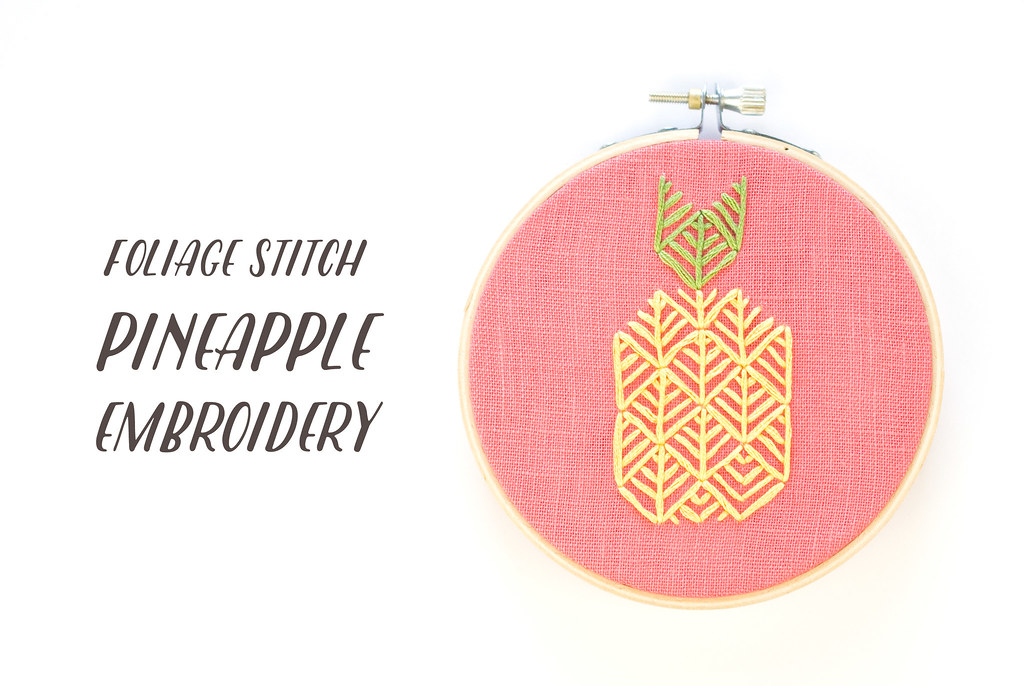
I recently learned about foliage stitch, which was new to me. And wanting to give it a try right away, I decided to make an embroidered pineapple. Because we just can't get enough pineapples, right?
My encounter with foliage stitch was on Pinterest and I was smitten. The style of it tells me that it's a needlepoint stitch, but I didn't see many other references to it by this name. So maybe it's called something else? Since the person who posted it called it foliage stitch, I'm going with that.
But since her example was on evenweave and done more like traditional counted thread embroidery, I worked it up my own way. Breaking the rules of embroidery is perfectly fine and worth perfecting. So here's my version of how to work foliage stitch:
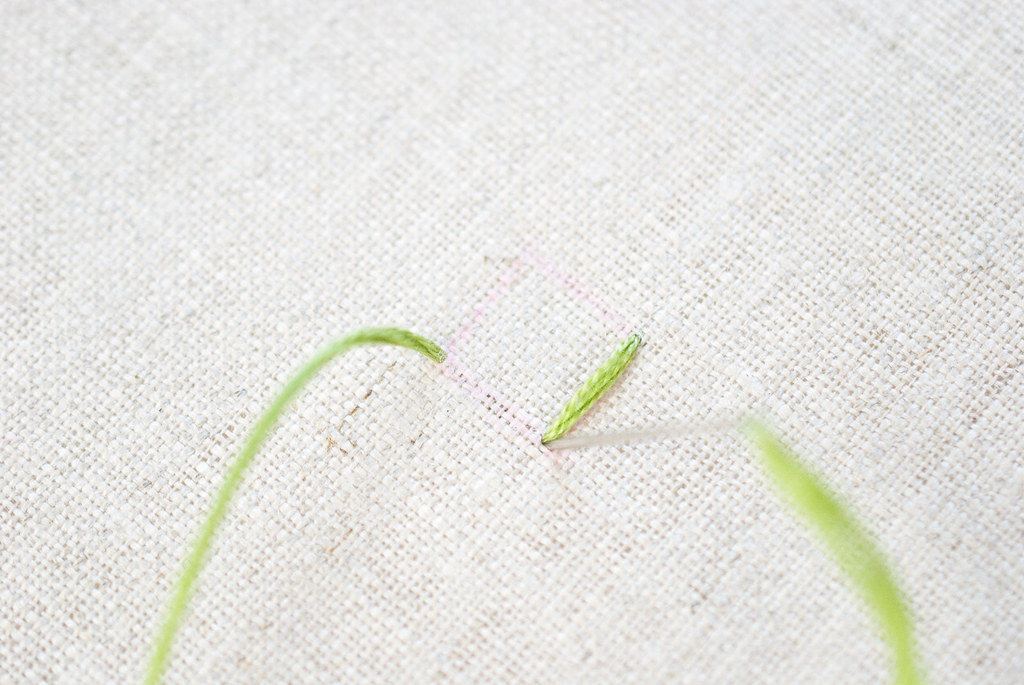
This stitch is worked within a square turned on the diagonal. If you look closely, you'll see a faintly marked pink square here.
Come up at one side corner and go back down at the bottom corner. Come up at the opposite corner and back down at the bottom corner.
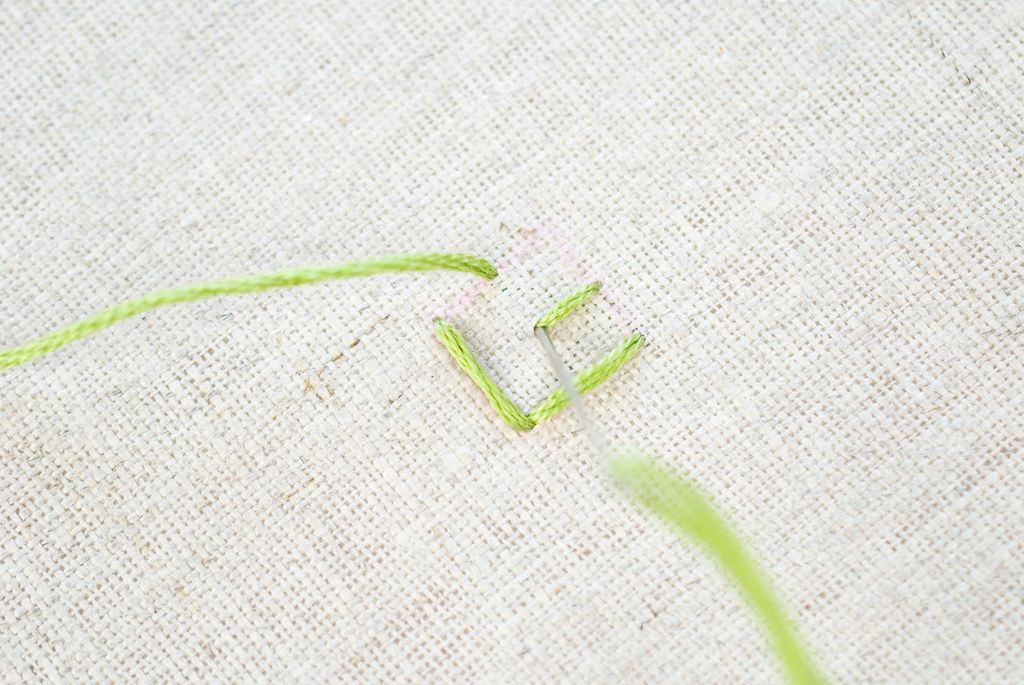
We start getting into more breaking the rules territory here. Because in theory, you should make the next row of stitches immediately above the first. But I'm jumping to the middle because it's easier to visually space out the stitches this way. At least, for me it is.
Feel free to stitch these in any order you choose. You can even stitch one side first and then the other side. I did this while stitching my pineapple, as it saves on thread.
So, come up in the middle of one of the top edges, then go down directly in the center of the square. Repeat on the other side.
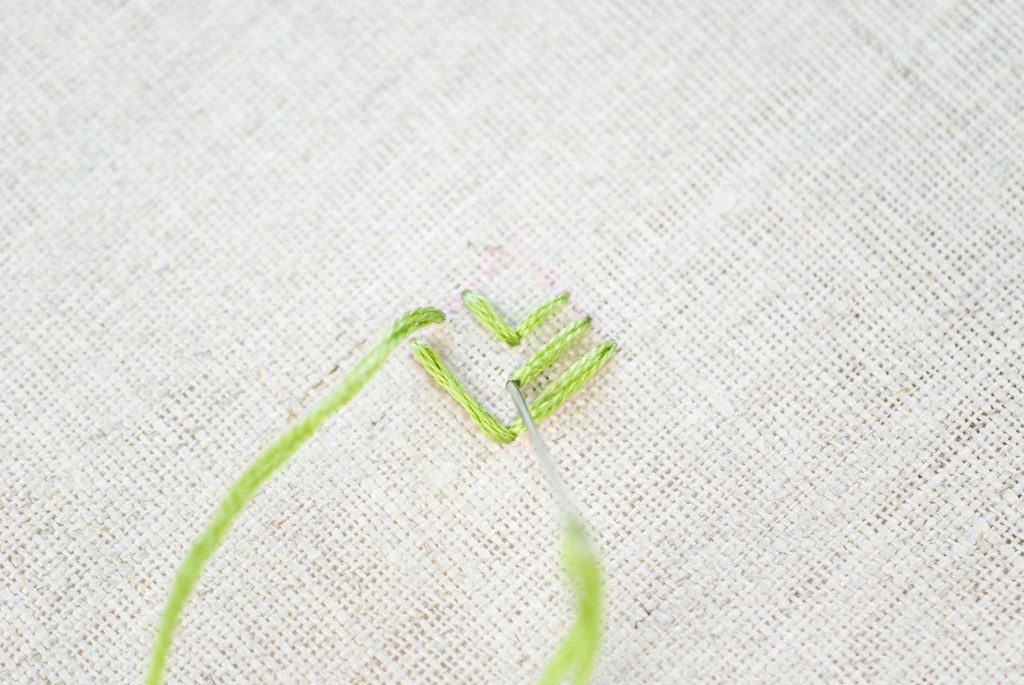
Come up half way between the first stitches and go down half way between them, right on the vertical center. Repeat on the other side.
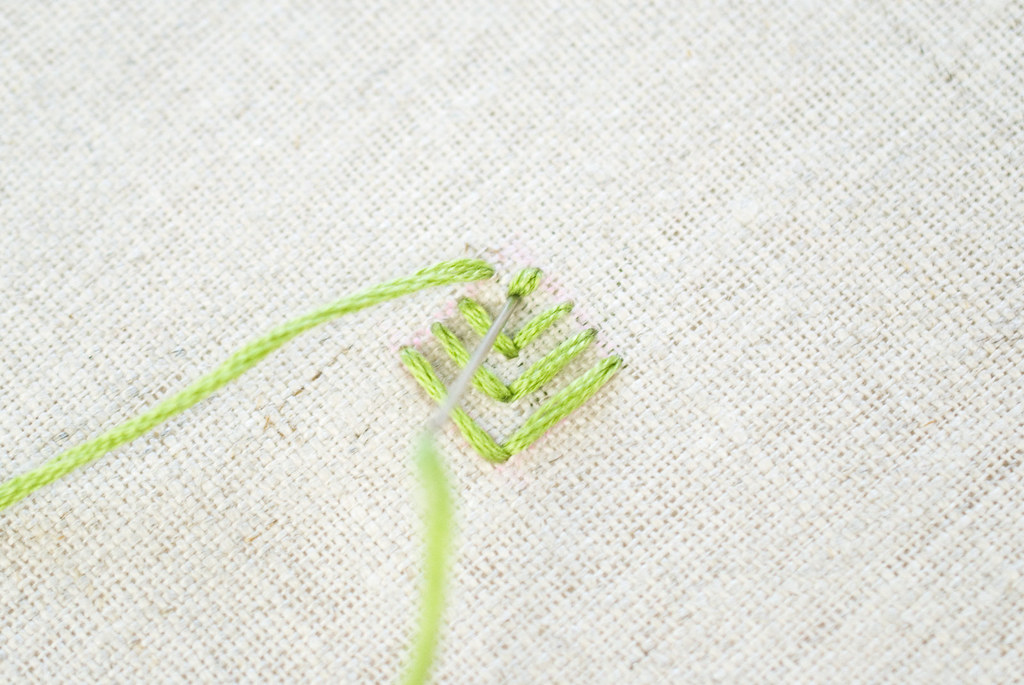
Come up half way between the top corner and the top stitch and go back down on the vertical center between the top corner and the point where the top stitches meet.
This is a little different from the original stitch I saw, because that one only had three sets of these angled stitches. Technically, you could do as many or as few as you wanted, depending on the size you're making these stitches, as well as how dense you want them to look.
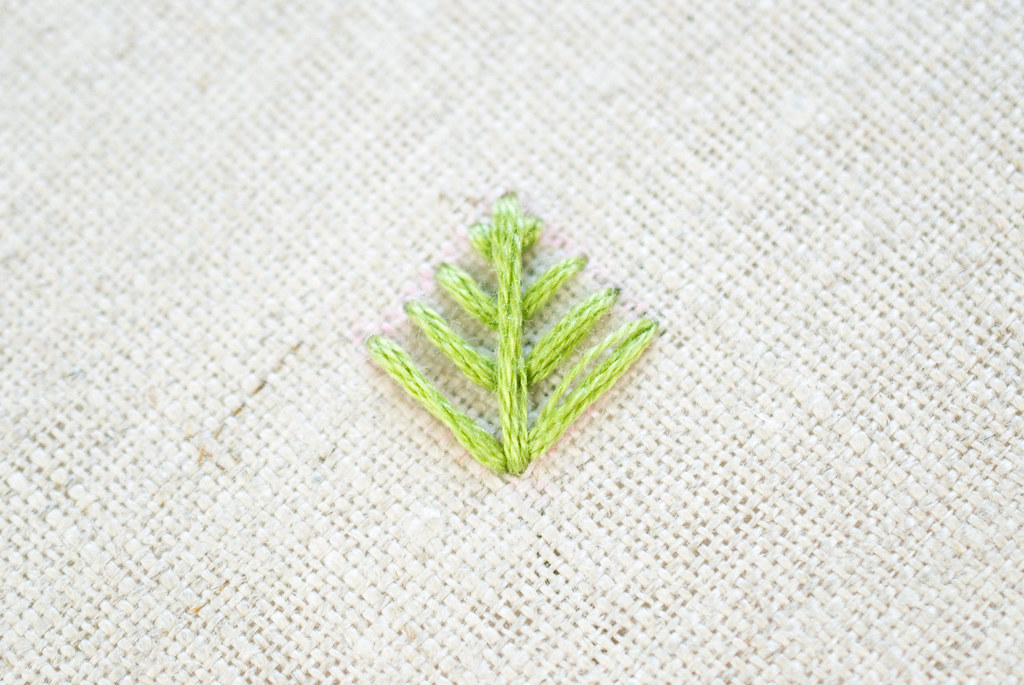
Finally, finish it off with a vertical stitch from top to bottom. Or bottom to top. Again, it's not vitally important what order you work these stitches.
So now that I've showed how to do foliage stitch, it's time to find a way to use it! I loved the piece that inspired my exploration into the stitch, but is it only for a purely geometric design? My trouble with stitches like this is that they aren't always easy to work into the kinds of patterns I like to make and stitch.
I mean, I LOVE learning new stitches, but I keep going back to the basics because they work for the designs I enjoy. So I started thinking about how this "beyond basics" stitch could make something cute.
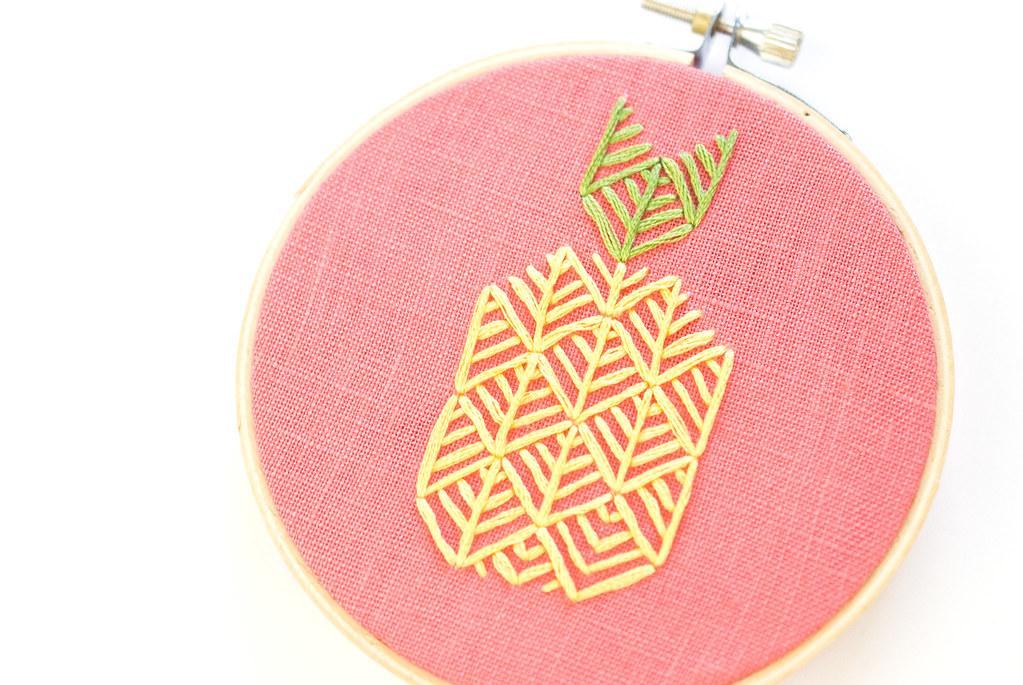
And a pineapple came to mind! The shape of the stitches works really well for the pattern of a pineapple, and even for the top. Not to mention, this stitch makes it possible to finish this little stitchery in an evening!
I set up a pattern for you, and it comes in two sizes on the page. My finished pineapple is the larger pattern and it fits in a 4in hoop. The stitches are a little long at this size, but it just barely works. I used all six strands of floss, but I think it would very pretty with fewer strands or perle cotton.
As you can see, some of these are half foliage stitches. Also because I kept true to the form of the stitches, some edges of the pineapple are more open. Feel free to finish those off and have more of a border of long stitches around the entire shape.
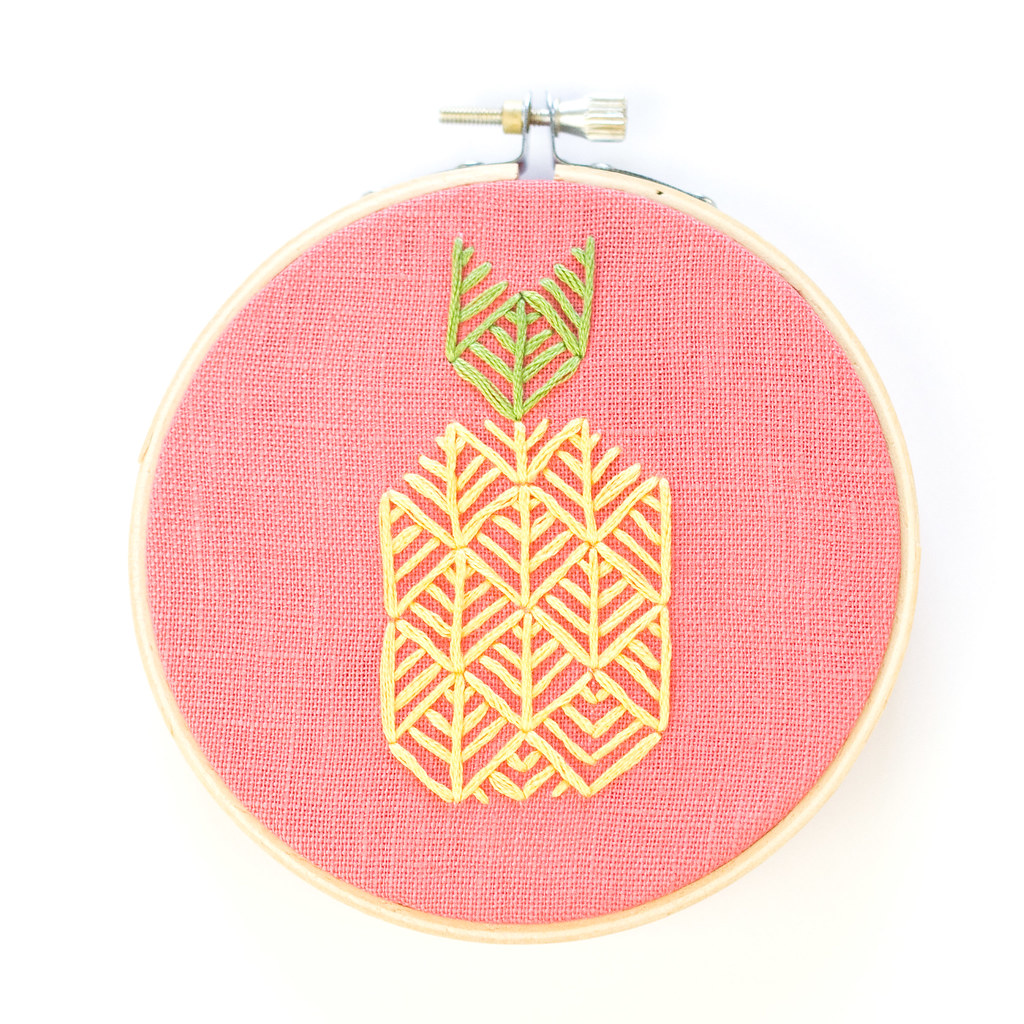
Happy pineapple stitching!
Super cute project and thanks for the new stitch instructions.
ReplyDeleteI am smitten!
ReplyDeleteThe background fabric is perfect, too.
ReplyDelete